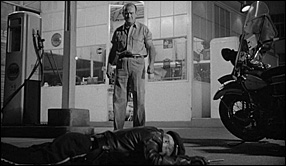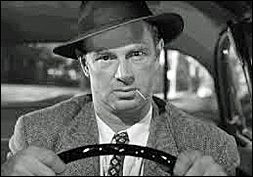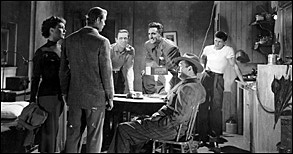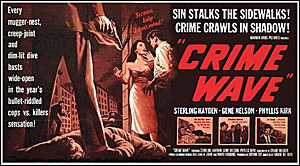Sun 21 Jan 2018
CROSSTRAP. Screen Entertainment Company/ Unifilms, UK, 1962. Laurence Payne, Bill Nagy Jill Adams, Zena Marshall, Gary Cockerell. Screenplay by Philip Wrestler, based on the novel The Last Seven Hours by John Newton Chance. Directed by Robert Hartford-Davis.
This no-budget British suspense film has its moments and is based on a novel by popular British writer John Newton Chance (aka SF author John Lymington, among others).
Geoff and Sally (Greg Cockerll and Jill Adams) are a mystery writer and his bride off on a holiday to a remote little spot so they can have time alone and he can finish his book, but no sooner have they arrived than they find a body, and a gangster (Bill Nagy) who won’t let them go.
Soon the boss, Duke (Laurence Payne) arrives with French girlfriend Reva (Zena Marshall) and two others in tow. They’ve just pulled a jewel heist in London and killed a policeman, and meanwhile they are awaiting the plane due to land at a nearby airfield and fly them out to France.
There are complications though, like the dead man, and who killed him, and did he betray Duke and the gang? Was it a rival gang that Duke fears has followed them? Then there is Duke himself, a psycho if there ever was one, who has eyes for Sally and would like to see Geoff dead to clear the way.
None of which makes Reva happy, and since she is key to their getaway in France that matters.
Pretty soon the rival gang arrives and a siege begins, Duke tries to use Geoff as a goat to get him killed, but only succeeds in getting him captured, and as the time nears for the plane the gang can’t afford to stay penned down and must make a break for it.
It builds to a fairly exciting finish, with Duke getting his just reward from Reva and Geoff and Sally escaping by the skin of their teeth.
In a forgiving mood Crosstrap kills a bit over an hour pretty well. Payne, himself a successful mystery writer and television’s Sexton Blake, is the main attraction acting-wise and seems to be having fun as Duke. Adams and Marshall are nice to look at and neither embarrasses themselves in their performances. Nagy, you may not know by name, but will recognize if you have seen many Brit films of the period, the same for most of the rest of the cast.
Of Cockerll, let us be generous and say he is adequate.
Currently this is available on Amazon Video. I can only say I’ve spent worse hours.




